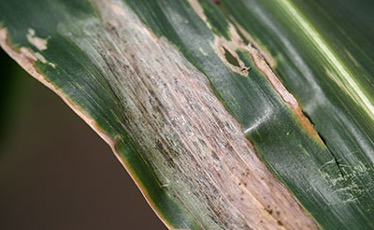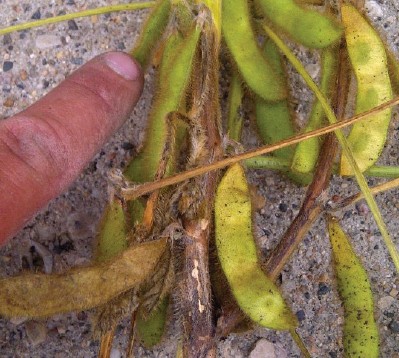Weird Side-Studies: Infecting Corn with Goss’s Wilt

Beyond our extensive research program and annual Ole & Sven plots, sometimes we tackle little side projects to try to learn about and solve more local issues. For example, one of 2021’s ‘side projects’ was an observation study on Goss’s Wilt, a bacterial corn disease that has emerged and continues to spread and grow in severity as corn acres expand.
Infection
We wanted to learn more about the disease and see how our corn products handle it. So, we purposely infected some of the plants in our show plot. Then, made observations throughout the season to learn disease cycle and take a few notes.
While the season started out very promising, a laundry list of confounding factors followed (can somebody say DROUGHT), complicating our mini-study. And while we were unable to pull any actual, useful data from the project, we did learn several characteristics about the disease.
- We know Goss’s Wilt is a bacterial disease which require an entry point into the plant, similar to bacterial infections in people. Entry points occur at a break in the leaf surface such as a broken leaf, insect damage or another physical wound.
We proved this by literally dumping all the leftover ‘infection slurry’ directly into the whorl of several plants. When you think about plant anatomy, the whorl contains the growth point or apical meristem, the epicenter of grass growth. Even though we applied the bacteria-water slurry directly to this sensitive tissue, the plants showed no sign of infection, confirming that injury is required.
- We were surprised by the lack of disease spread throughout the summer. Although we monitored the entire plot, no infection was observed beyond the initial plants. We believe the lack of spread can be attributed to no serious wind or severe storms during the season. The corn plants had fewer leaf injuries to be infected and there was no rain splash to spread bacteria from plant to plant.
Additionally, it seemed like we heard fewer reports of Goss’ Wilt in the area, further backing up this idea.
Knowing that the disease didn’t spread or reproduce well in ’21 we believe there will be lower inoculum numbers and lower infection rates going into the 2022 season. However, this doesn’t mean we won’t see any infection next year.
Prevention
The most critical step in a management plan is recognizing that the disease is actually present in your area. Once it has been identified, there isn’t much you can do in-season, but you can start constructing a management plan for the following season.
One of the more practical methods for managing the disease is residue control. Goss’ Wilt has about a 10-15 month period where inoculum can survive on corn residue.
The other is selecting the right hybrid before the season. To learn more about disease resistance in our products, you can find the results in our product guide or online.
Goss’s Wilt is a disease that has reached our region, and it isn’t likely to go away. But by identifying it, understanding it, and then developing a management plant to handle it, we can reduce its impact and instead focus on big yields!











